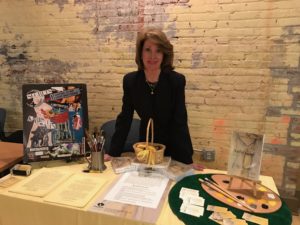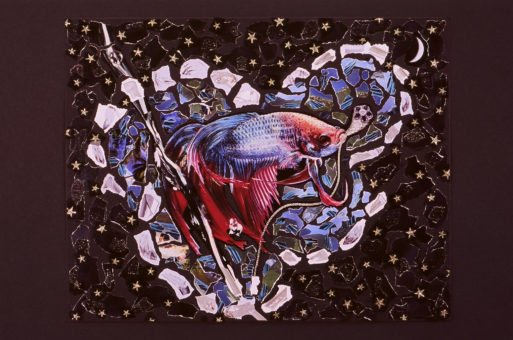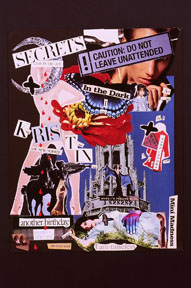Today is the first part of a two-part interview with Sharon Strouse, a Maryland-based board-certified registered art therapist and licensed clinical professional art therapist. Sharon lost her daughter Kristin to suicide in 2001, and has since worked as a bereavement specialist and presenter, telling her story at various suicide-related workshops throughout the United States. She is a board member of the Johns Hopkins Medicine Department of Psychiatry and Behavioral Sciences, and the author of “Artful Grief: A Diary of Healing“, published in 2013.

Art therapist Sharon Strouse, author of “Artful Grief: A Diary of Healing”
Angela Underwood: How did your daughter’s suicide impact your life?
Sharon Strouse: Kristin was 17 when she committed suicide on Oct. 11, 2001. That was a transformative moment for me, and it changed my life completely. My identity as a mother, professional, human being and wife was shattered. And I asked myself, “Who am I and what do I do next? How did this happen?”
So, it set me on a journey, like many other people who have pivotal moments in their life that take them down an unexpected path. I wound up doing the very traditional types of therapy at first, including a psychiatrist, being in a survivors of suicide group and being in couples’ therapy.
I don’t know what I expected after that first year, but after the first year I thought “Wow, if this is good as it gets I am in big trouble.” There was just so much pain and so much destruction.
Angela: What brought you to the decision to use art to help with your grief?
Sharon: It was one of those moments of total surrender to the universe, to what was happening, to the pain of it all. It was the first year after her death around Christmastime, and I was standing in my kitchen. I looked up and said, “Oh my God, help.” And I heard a soft voice that said, “Why don’t you make a collage?”
You would think as an art therapist that making art work in response to my daughter’s death would have been an obvious place to go, but it never occurred to me. I think that really speaks to the thinking mind, the rational mind, and what is obvious and not so obvious when something traumatic happens.

The Goldifsh collage by Sharon Strouse
Credit: artfulgrief.com
I turned the lights on in the kitchen and looked at the magazines that were sitting there on the ottoman. I went and got some of Kristen’s art materials since she was a freshmen student at the Parson School of Design when she died. In three hours, I had constructed something that was a visual representation of what had happened. And it became a road map to a lot of the inner work I did subsequent to that. It also became the foundation for the book, “Artful Grief” and what I carry out into the world.

Collage titled “Caution” created in December 2002
Credit: artfulgrief.com
Angela: Do you have to be an artist for this type of therapy to be constructive?
Sharon: I was trained as a psychotherapist, so I am able to offer an art as a modality for healing. But in that training, you didn’t have to be an artist yourself. In fact, I didn’t see myself as an artist, even though I had taken art classes and had an art background. It was somewhat unusual for me to hear that directive “go make a collage.” But I did it.
Angela: How does making a collage help people move through grief?
Sharon: The thing I love about collage is that I can walk into a room full of bereaved parents who have never done anything artistic in their life. Yet they can all open a magazine, tear out an image or a word, and put a collage together. That is what I love about this modality. Anybody can do it. The creative process itself makes a safe environment for people to explore what has happened to them and to pour out their feelings and begin to have a sense of themselves. It helps them move into a place of deep healing.
A collage also becomes a visual diary. When I am working with people, they absolutely don’t have to have any background and get great benefits from it. They can feel themselves relax back into their own body, and at the same time they are they are paying full attention to what has happened to them. That is the beauty of the creative process.
Be sure to join us next week for the second part of the interview when Sharon Strouse discusses artful grief and shares some tips about how to start a collage.

 How Can Creating Art Help You Grieve the Loss of a Loved One?
How Can Creating Art Help You Grieve the Loss of a Loved One?


 Our Annual Seven Holiday Gifts for Someone Who Is Grieving, 2024 Edition
Our Annual Seven Holiday Gifts for Someone Who Is Grieving, 2024 Edition
 “Making Mobiles” by Karolina Merska
“Making Mobiles” by Karolina Merska
 “Hands Up to the Sky” by Michael Franti & Spearhead
“Hands Up to the Sky” by Michael Franti & Spearhead














